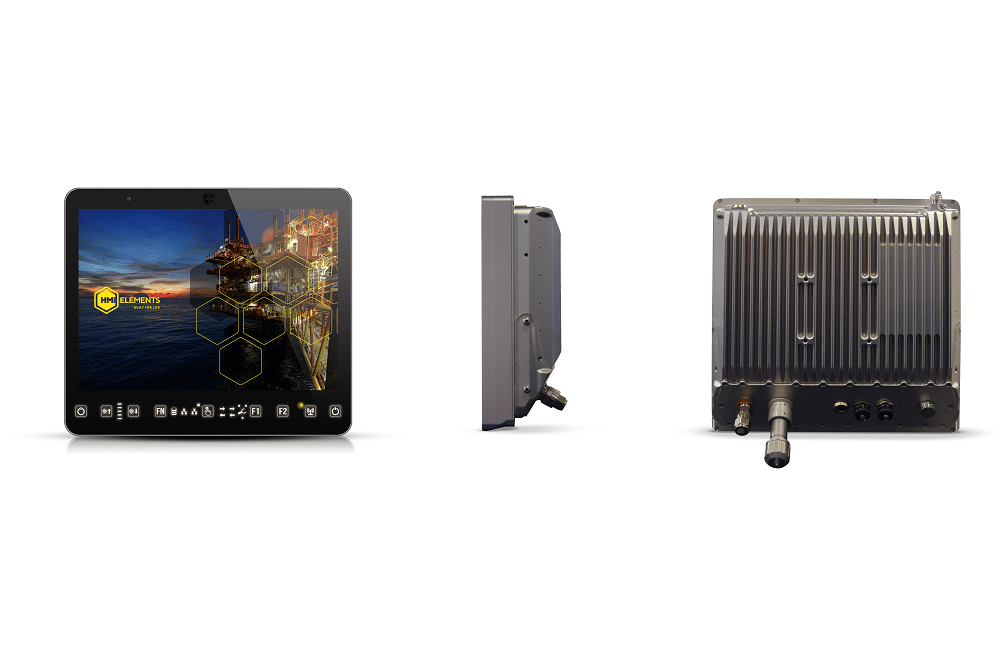There has been a recent surge in the use of tablets in hazloc environments. This increase in use is both a positive and a negative, as although the advancements in transportable tech has many advantages, there are also some key drawbacks to the use of tablets in hazardous environments.
In this paper we will take a look at both the pros and cons of tablet use in hazloc environments.
There are many pros tablet devices offer, for instance, a tablet can be easily transported around the work area and swapped between people, creating fluidity and making it easier to make decisions on the move.
A tablet is also more cost-effective than a fixed PC workstation.
Tablets are also useful for tracking inventory, asset maintenance and in the field training.
However, despite the advantages of convenience and cost, a tablet device also has many drawbacks when compared to a fixed PC workstation.
For instance, computing in the hazardous area almost always requires connectivity that may not be available on a tablet. Such as USB, I/O connectivity, data collection, not to mention the problem of charging. Plugging in any I/O, power connections, etc. to a tablet will void the Hazardous location certification. Doing so can lead to a potential spark creating a dangerous situation. This leaves only wireless communication which may not always be reliable whilst on the move. Tablets also have small viewing screens (most on the market are 10” or smaller) making viewing software and data difficult.
This inherent unreliability makes tablet devices questionable for “mission critical” oil and gas applications. This is where fixed installations are best for use during services such as; mud logging, MPD, MWD/LWD, directional drilling, EDR, rig floor, tongue control, CCTV, plant refining process, heat exchanger, cracker units, platform processing and offshore.
There is constant danger of losing a tablet as they can be misplaced, stolen or damaged much more easily than a fixed solution. There is also a risk of the device being removed from its enclosure and used in an improper or dangerous way.
Another downside to the effective use of tablet devices is that they are unable to be secured with TPM type encryption; a major issue where security is a priority.
Tablets could also pose a safety risk, as operatives may be walking around site whilst looking at the device and trip.
There are certain aspects of tablet functionality that are also not up to a hazardous computing standard; for instance, tablet screens are not sunlight viewable and could overheat in direct sunlight (sunloading), leading to failure when it is needed most. Mission critical process and extreme weather conditions (-40 to +60 C) impact on a tablets operation and reliability whereas a fixed PC solution will have been designed from the ground up with these extreme environment challenges accounted for.
Tablets also struggle with limited processing power and screen real estate, meaning combined application use or overhead is prevented.
As a device that is reliant on wireless connection a tablet may often lose network connection, whereas a fixed workstation would have a more reliable hardwired or fibre connection.
Whilst tablets are cheap, enabling economical volume purchasing the downside is that it could be difficult to distinguish between those with different applications making allocation complex. If a specific tablet must be mandated to remain within a particular work area, what is the true value of portability?
Tablets are not a tried and true rugged solution like a fixed PC and is not subjected to the same thorough testing.
In summary, whilst the use of the tablet in a hazloc area seems a good idea on the surface – who wouldn’t love more convenience and affordability? – they are simply not up to the standards required in a hazardous area and adds credibility to the old mantra “cheapest is not necessarily the least expensive”
Fixed PC work stations are the safest and most reliable option for hazloc environments; perhaps one day there will be a portable solution that will stand up to the tried and tested reliability of a fixed workstation, but that day is yet to come.
Oil and gas operations are commonly found in remote locations far from company headquarters. Now, it's possible to monitor pump operations, collate and analyze seismic data, and track employees around the world from almost anywhere. Whether employees are in the office or in the field, the internet and related applications enable a greater multidirectional flow of information – and control – than ever before.











